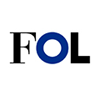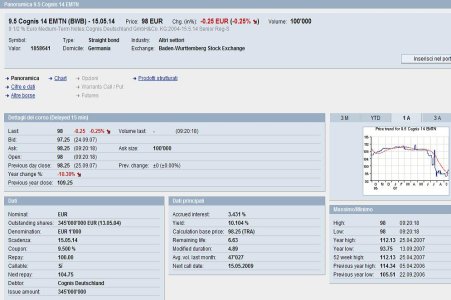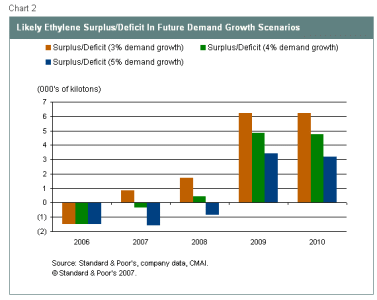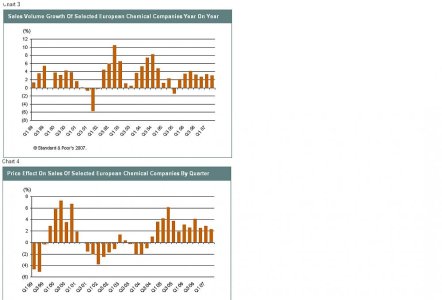Cognis e' da cuori impavidi, io ne ho preso il solito 2% dopo la tempesta, pero' tenete conto che come politica cerco di costruirmi un "power index" dello high yield, quindi quelle che ritengo le migliori fra BB, B e CCC+.
Come situazione debitoria e' messa piuttosto male, la situazione appare chiara dal sito di Fitch,
http://www.fitchratings.com/corporate/ratings/issuer_content.cfm?isin=XS0191508281&isin_srch=Y
attenzione pero' che le 2015 floater sono state rimborsate anticipatamente, comunque come vedete l'obbligazione e' subordinata ad altri debiti, il tentativo di ristrutturazione del debito si puo' leggere in
http://www.faz.net/s/Rub09A305833E1...66A4B37BBE528408EA~ATpl~Ecommon~Scontent.html
e' in tedesco ma se lo traducete in inglese con babel.altavista.com si capisce come stiano arrancando.
Il recovery rate 3 di S&P forse e' anche troppo ottimistico, per Moodys, come per Fitch, siamo fra il 5 e il 6.
D'altra parte come punti di forza c'e' l'indubbio vantaggio competitivo della chimica tedesca, in soldoni la chimica sta alla Germania come la pizza sta all'Italia, la linea di prodotti, la presenza internaziona e il fatto che tutta la faccenda e' stata messa in piedi da Goldman & Sachs e dal fondo di private equity Permira, entrambi ci tengono a non perdere la faccia, soprattutto in questo momento.
C'e' una call nel 2009, dopodiche' anche per me tutto e' ad altissimo rischio, se va bene si riesce a vendere dopo aver portato a casa un po' di cedoloni, dopo il 2010 visti gli altri debiti la vedo molto brutta.
Scusate se intevengo poco, ma visto il lavoro e l'assistenza a mia madre malata non risco a fare di piu'.



 )
)


 ) magari posto lì...
) magari posto lì...